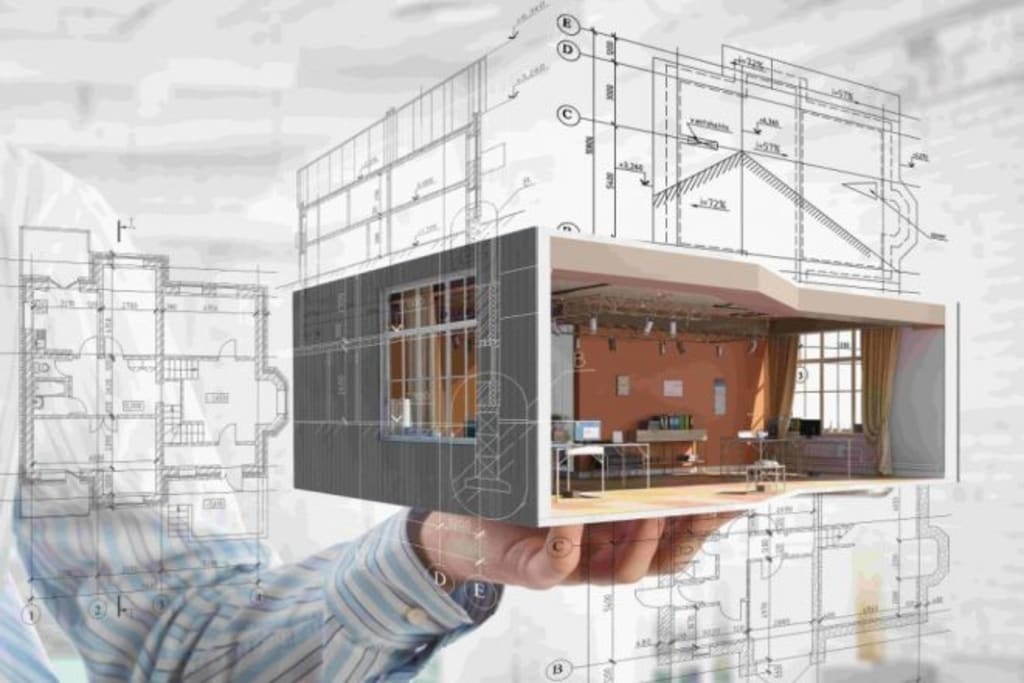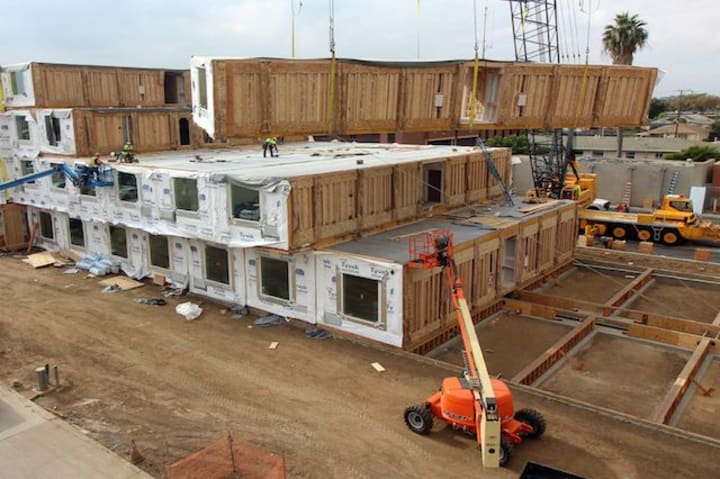Innovative Construction Techniques: From Traditional to Modern Approaches in Housing
Exploring the Evolution of Building Methods: Bridging Ancient Practices with Cutting-Edge Technology in Residential Architecture

The construction industry has come a long way from using rudimentary tools and materials to employing advanced technology and innovative methods. Understanding the evolution of construction techniques is crucial for appreciating the advancements we benefit from today. This journey from traditional methods to modern approaches highlights significant improvements in efficiency, sustainability, and overall building quality.
Traditional Construction Techniques

Stone Masonry
Stone masonry is one of the oldest construction techniques, dating back to ancient civilizations. This method involves using stones that are either naturally occurring or cut to fit specific designs. The durability of stone masonry has allowed many historical structures to stand the test of time. Think of the iconic pyramids of Egypt or the impressive medieval castles across Europe—these are perfect examples of the longevity and resilience offered by stone construction.
Timber Framing
Timber framing involves creating a skeletal frame of timber to support the structure. This technique has been widely used due to the availability and workability of wood. Timber framing offers excellent insulation and has been a favorite for constructing homes in various regions, especially where timber is abundant. This method also allows for creative architectural designs, giving each structure a unique character.
Brick and Mortar Construction
Brick and mortar construction has evolved significantly over the centuries. Originally, bricks were made from clay and sun-dried; however, advancements led to kiln-fired bricks that are much more durable. This technique offers several advantages, including fire resistance, thermal mass, and aesthetic versatility. The use of bricks continues to be popular, as they provide a strong and reliable building material for various types of structures.
Adobe Construction
Adobe construction utilizes natural materials like clay, water, sand, and organic matter to create sun-dried bricks. This method is highly sustainable and has been used for centuries in arid regions due to its excellent thermal properties. Adobe buildings maintain a comfortable indoor temperature, making them energy-efficient and environmentally friendly.
Access a thorough guide featuring a diverse range of construction dissertation topics, offering insights and ideas to help you choose a topic that aligns with your interests and academic goals.
Transition to Modern Construction Techniques
Industrial Revolution Impact
The Industrial Revolution marked a significant turning point in construction. The introduction of machinery and mass production techniques transformed the industry, allowing for quicker and more efficient building processes. This period saw the rise of new materials and techniques that paved the way for modern construction.
Introduction of Steel and Concrete
Steel and concrete became game-changers in construction due to their strength and versatility. Steel frames allowed for taller buildings and more innovative architectural designs, while concrete provided a durable and adaptable building material. Together, these materials revolutionized the construction of skyscrapers, bridges, and other large-scale projects.
Prefabrication in Construction
Prefabrication involves manufacturing building components off-site and assembling them on-site. This method significantly reduces construction time and minimizes waste. Prefabrication has been embraced for its efficiency and cost-effectiveness, particularly in the construction of residential buildings and modular homes.
Modern Construction Techniques

3D Printing in Construction
3D printing is one of the most exciting innovations in modern construction. This technology allows for the creation of complex structures by layering materials based on digital designs. 3D printing offers several benefits, including reduced material waste, faster construction times, and the ability to create custom designs. It's like having a giant printer that builds houses instead of printing paper.
Modular Construction
Modular construction involves building sections of a structure in a factory setting and then transporting them to the construction site for assembly. This method offers incredible flexibility and customization options. Modular homes can be designed to meet specific needs and preferences, making them a popular choice for modern housing solutions.
Gren Building Technologies
Sustainability is a key focus in modern construction, and green building technologies are at the forefront of this movement. These technologies include energy-efficient designs, renewable energy sources, and sustainable materials. Green buildings reduce environmental impact and offer long-term savings on energy costs. Think of it as building with the planet in mind, ensuring a healthier environment for future generations.
Smart Homes and IoT Integration
The integration of smart technologies and the Internet of Things (IoT) in homes has transformed how we live. Smart homes feature automated systems for lighting, heating, security, and more, all controlled via smartphones or voice commands. This technology enhances convenience, security, and energy efficiency, making our homes more comfortable and responsive to our needs.
Emerging Trends in Construction
Nanotechnology
Nanotechnology involves manipulating materials at the molecular level to create stronger, lighter, and more durable building materials. This technology has the potential to revolutionize construction by improving material performance and reducing the overall weight of structures, leading to longer-lasting and more resilient buildings.
Robotics in Construction
Robotics is increasingly being used in construction to automate tasks such as bricklaying, painting, and even demolition. The precision and efficiency of robots enhance the quality of work and significantly reduce the time required for construction projects. Imagine robots working alongside human workers, speeding up the construction process and reducing the risk of human error.
Advanced Materials
The development of advanced materials, such as self-healing concrete and aerogels, is pushing the boundaries of what's possible in construction. These materials offer improved strength, durability, and energy efficiency. Self-healing concrete, for example, can repair its own cracks, extending the lifespan of structures and reducing maintenance costs.
Benefits of Modern Construction Techniques
Cost Efficiency
Modern construction techniques often lead to significant cost savings. Methods like prefabrication and 3D printing reduce labor costs and material waste, making construction projects more affordable. This means more bang for your buck, whether you're building a new home or a large commercial project.
Time Savings
One of the most notable benefits of modern construction techniques is the reduction in construction time. Prefabricated components, for instance, can be produced and assembled much faster than traditional building methods. This acceleration means quicker project completion, which is beneficial for both builders and clients.
Enhanced Safety
Modern construction techniques also prioritize safety. Automated systems and robotics minimize the need for manual labor in hazardous conditions, reducing the risk of accidents. Improved safety protocols and materials contribute to safer work environments and better protection for workers.
Challenges in Modern Construction Techniques
High Initial Costs
While modern construction techniques can save money in the long run, the initial investment can be high. Advanced technologies and materials often come with a hefty price tag, which can be a barrier for some builders and developers.
Need for Skilled Labor
The adoption of new technologies in construction requires a workforce with specialized skills. Training workers to use advanced machinery and techniques can be time-consuming and costly, but it's essential for the successful implementation of modern construction methods.
Regulatory Hurdles
Innovative construction techniques often face regulatory challenges. Building codes and regulations may not always keep pace with technological advancements, leading to delays and complications in project approval. Navigating these hurdles requires careful planning and adherence to legal requirements.
Future of Construction
Sustainable Development Goals
The future of construction is closely tied to sustainability. Meeting sustainable development goals will require continued innovation in building materials and techniques. The construction industry must focus on reducing its carbon footprint and promoting environmentally friendly practices.
Integration of AI and Machine Learning

Artificial intelligence (AI) and machine learning are poised to revolutionize construction. These technologies can optimize project planning, improve resource allocation, and enhance decision-making processes. Imagine a construction site where AI predicts potential issues and suggests solutions before they become problems.
Potential for Further Innovation
The potential for innovation in construction is limitless. As technology continues to evolve, we can expect to see even more groundbreaking developments. From autonomous construction vehicles to buildings that generate their own energy, the future holds exciting possibilities for the construction industry.
Conclusion
The evolution from traditional to modern construction techniques showcases the industry's incredible progress. While traditional methods laid the foundation for building, modern approaches have transformed the way we construct homes and infrastructure. Embracing innovative techniques not only improves efficiency and sustainability but also enhances the overall quality of our built environment. The future of construction looks bright, with endless possibilities for further advancements.
FAQs
1. What are the main differences between traditional and modern construction techniques?
Traditional construction techniques rely on manual labor and locally available materials, while modern techniques incorporate advanced technologies, prefabrication, and innovative materials to enhance efficiency, sustainability, and design flexibility.
2. How does 3D printing revolutionize the construction industry?
3D printing allows for the creation of complex and customized structures with reduced material waste and faster construction times. This technology enables more efficient and cost-effective building processes.
3. What are the benefits of using green building technologies?
Green building technologies promote sustainability by reducing energy consumption, minimizing environmental impact, and enhancing indoor air quality. They also offer long-term cost savings through energy-efficient designs and renewable energy sources.
4. Why is modular construction considered cost-effective?
Modular construction reduces labor costs and construction time by manufacturing building components off-site and assembling them on-site. This method minimizes waste and allows for greater control over quality and scheduling.
5. What future innovations can we expect in the construction industry?
Future innovations in construction may include further advancements in AI and machine learning, the use of robotics for automation, the development of new advanced materials, and the integration of sustainable practices to meet global environmental goals.
About the Creator
thomas smith
Hello, I am Jessica Tyler, an experienced academic writer. If you are currently facing challenges with your MATLAB Assignment Help, worry not – I am here to assist you. I offer personalized Assignment Help services.
Enjoyed the story? Support the Creator.
Subscribe for free to receive all their stories in your feed. You could also pledge your support or give them a one-off tip, letting them know you appreciate their work.






Comments (1)
Nice reading Thomas. Thanks for sharing.